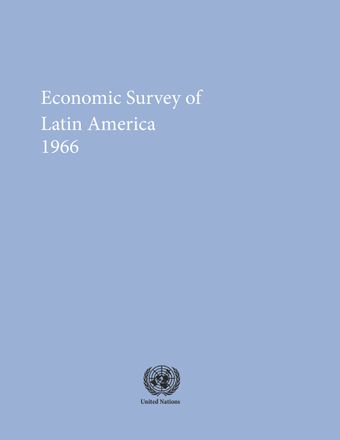Agriculture in Latin America: Introduction

- Author: Economic Commission for Latin America and the Caribbean
- Main Title: Economic Survey of Latin America 1966 , pp 311-312
- Publication Date: December 1966
- DOI: https://doi.org/10.18356/3c5f924a-en
- Language: English
In the last few years there has been talk in government and private circles and in international organs about a “crisis in agriculture” in Latin America which is seriously jeopardizing the present and future prospects for economic and social development. This concern, which is reflected in the increasing importance attached to agricultural questions in international and regional meetings and in national development programmes, has been aroused by five major features of past and present trends in most of the Latin American countries. Those features are: (a) the failure of production, particularly of livestock, to keep pace with the growth of the population. This has made it necessary to import increasing quantities of food and raw materials, and has either reduced exports or slowed down their rate of growth. It has also prevented the region from obtaining a sufficient supply of agricultural products, thereby creating inflationary pressures in certain countries and reducing per capita consumption of agricultural products in nearly all countries; (b) low productivity, both per head of stock or unit of arable and grazing land, and per person employed, and the failure of technology to make much progress over the last few decades in the majority of countries, combined with under-utilization of land, water and manpower, and loss of farm land through erosion; (c) the concentration of property in the hands of a few people, and unsatisfactory systems of land tenure, with the result that the bulk of the rural population earns so little that it is barely able to subsist. This explains the low level of investment and negligible technical progress in Latin American agriculture; (d) world market conditions, which have made it difficult for Latin America to increase its volume of exports, and have led to a decline in the prices of the major agricultural commodities it exports to the detriment of its foreign exchange earnings; (e) the absence of a clear-cut government agricultural policy in most countries capable of coping with these internal problems in a comprehensive and co-ordinated way, and the nonexistence or inadequacy of the legal, administrative and financial machinery required for a determined effort to expand and improve agriculture.
-
From This Site
/content/books/9789210583510s006-c001dcterms_title,dcterms_subject,pub_keyword-contentType:Journal -contentType:Contributor -contentType:Concept -contentType:Institution105



